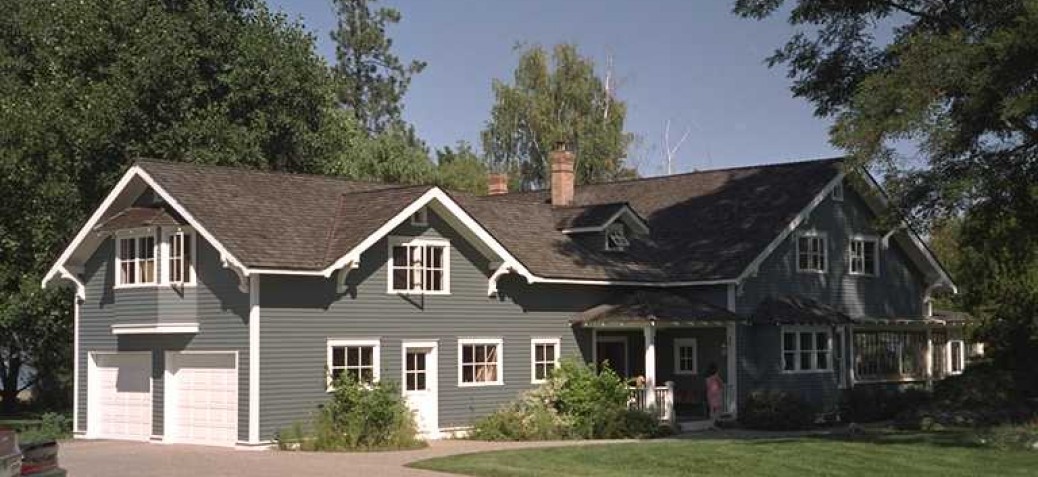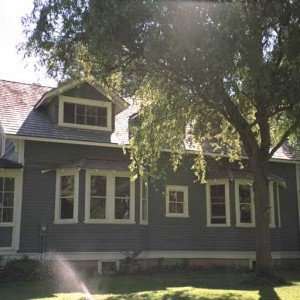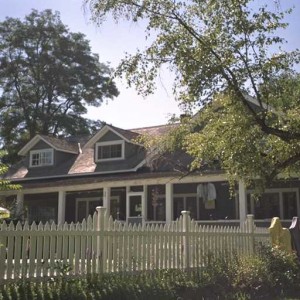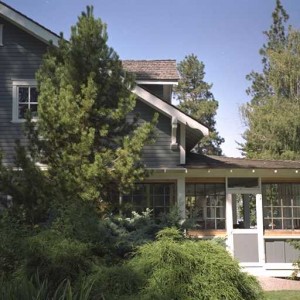Stubbs House
Place Description
The Stubbs House is a rambling, one and one-half storey wood-frame Craftsman style residence, with substantial but sympathetic additions. The house, surrounded by broad lawns, is located on a large, rural property in Kelowna's Mission neighbourhood, far removed from the city centre. Located on the property are various agricultural outbuildings, sheds and a complementary garage, and there are views to Okanagan Lake from the house and rear yards.
Heritage Value
The Stubbs House is of heritage value for the reference it makes to Kelowna's historical development, heavily influenced by the settlement of remittance men who immigrated to Canada from Britain and sought to establish themselves in the comfortable lifestyle of a gentleman farmer, afforded to them by the allowances (remittances) sent from their well-to-do families in England. Construction of the house is associated with the pre-First World War settlement boom in the Kelowna area, and is typical of settlement of the Mission area by remittance men. The Stubbs House was built by one such remittance man, Robin Holford Stubbs (1882-1957), who acquired the property in 1912 and built the original part of this comfortable, attractive house the following year, prominently situated on landscaped grounds consisting of broad lawns distant views. Many of the mature trees were planted by Stubbs, who operated his property as a mixed farm after returning from service in the First World War. The house was owned by Stubbs until the 1960s.
The Stubbs House is additionally of heritage value for its early twentieth century, Craftsman-influenced architecture. The Craftsman style, the most popular housing style between 1910 and 1930, exhibits a rejection of classically inspired design details. Decorative brackets, exposed rafters ends and a rich contrast in the textures of siding, shingles and smooth wooden trim distinguish the Craftsman style. This comfortable and spacious house has been renovated and much enlarged but with sympathetic additions, but retains much original exterior and internal architectural fabric and is a well maintained example of Craftsman style architecture.
Character Defining Elements
Key elements that define the heritage character of the Stubbs House include its:
- setting on a large rural with views of the Lake Okanagan and the surrounding mountains
- residential form, scale and massing as expressed by its one and one-half storey height (with crawlspace) and compound plan of rectangular proportions;
- gabled roof with gabled roof dormers, clad with cedar shingles;
- board formed concrete foundation and wood-frame construction with lapped cedar siding and cornerboards;
- Craftsman style details such as triangular eave brackets, exposed rafters, projecting eaves, and scroll-cut bargeboards;
- additional exterior elements such as the screened open front verandah, French patio doors with sidelights, bay windows with hipped roofs, and two corbelled red brick interior chimneys;
- irregular and symmetrical fenestration:, including multiple assembly 1-over-1 and 2-over-2 double-hung wooden-sash windows, multi-pane fixed sash, and square fixed single pane upper storey and attic windows;
- interior features including original millwork and panelled doors;
- early outbuildings including the shed (1941), root cellar and complimentary garage; and
- associated landscape features such as mature trees, orchard remnants and flower gardens.







